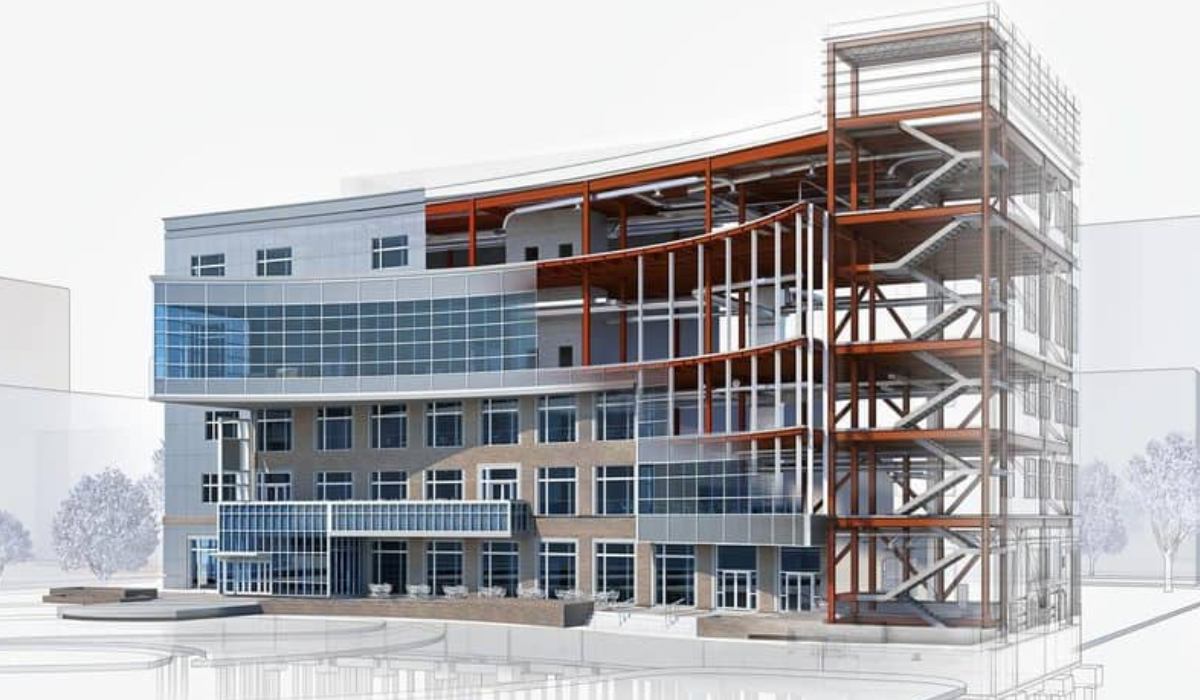How 3D BIM Scanning Is Revolutionizing Hospital Infrastructure
3D BIM Scanning and Digital Twins: The New Era of Smart Hospital Infrastructure
Dr. Martínez walks through the halls of the University Hospital while observing a replica of the building (hospital infrastructure) on his tablet—but it’s not just a blueprint. It’s a digital twin that allows him to monitor every corner of the facility in real time, from ventilation systems to patient flow in the emergency department.
This revolution in hospital management began with an exhaustive 3D BIM scan that transformed the traditional medical center into a smart hospital. What used to take days of physical inspections and piles of documentation can now be done in just a few clicks through an intuitive interface.
At Foundtech, we’ve witnessed firsthand how the implementation of digital twins in hospitals is redefining the way these critical facilities are managed. The combination of BIM technology and digital modeling not only streamlines daily operations but also significantly enhances the experience of both patients and medical staff.
But how exactly does this technology work, and what tangible benefits does it bring to healthcare facilities? In this article, we’ll explore in detail how BIM modeling and digital twins are transforming hospital infrastructure—and why more and more healthcare centers are adopting this innovation.
What Is a Digital Twin in Hospital Environments?
A digital twin in hospitals is a real-time, virtual representation of the entire hospital infrastructure, including the building’s physical structure and all mechanical, electrical, and plumbing systems. This technology goes beyond a simple 3D model by integrating live data from IoT sensors, hospital management systems, and medical equipment.
The creation of a hospital digital twin begins with a thorough 3D BIM scan, in which millions of data points are captured using technologies like 3D laser scanning, photogrammetry, and specialized drones. This process generates a point cloud that is later converted into a detailed BIM model.
Key Components of a Hospital Digital Twin:
3D Geometric Model: Exact representation of the physical structure
IoT Sensor Data: Real-time information on temperature, humidity, and air quality
Management Systems: Integration with HVAC, lighting, security, and medical equipment
Workflows: Modeling of hospital processes and staff movement
Predictive Analytics: Machine learning algorithms for preventive maintenance
According to a study by McKinsey & Company (2023), hospitals implementing digital twins report a 25% reduction in operational costs and a 30% improvement in energy efficiency within the first year of implementation.
Recommended Reading: 3D Scan to BIM – Transforming Reality into Constructive Data
Benefits of 3D BIM Scanning in Hospital Management
3D BIM scanning represents the fundamental first step in creating an efficient hospital digital ecosystem. This technology delivers both immediate and long-term benefits that radically transform the operations of medical centers.
Preventive Maintenance Optimization
Hospitals that implement digital twins based on precise BIM scans can predict failures in critical equipment up to 6 months in advance. The system analyzes usage patterns, vibrations, temperature, and other parameters to generate predictive alerts.
Quantifiable Predictive Maintenance Data:
40% reduction in unplanned downtime
35% decrease in corrective maintenance costs
50% increase in the lifespan of critical medical equipment
60% improvement in maintenance resource planning
Smart Energy Management
Integrating energy consumption data into the BIM model allows inefficiencies to be identified and resource use to be optimized. Hospitals consume 2.5 to 3 times more energy per square meter than traditional commercial buildings, making this optimization crucial.
Space Planning and Workflow Optimization
BIM modeling makes it possible to simulate different occupancy and patient flow scenarios, optimizing space distribution and reducing wait times. This capability proved especially valuable during the COVID-19 pandemic, when hospitals needed to quickly reorganize their facilities.
Implementing Digital Simulation Technologies in Medical Infrastructure
Successfully implementing digital twins in hospitals requires a methodological approach that combines technical expertise with a deep understanding of hospital processes:
Phase 1: Assessment and Planning
The process begins with a thorough evaluation of the existing infrastructure, identifying critical systems, integration points, and the hospital’s specific goals. This phase includes:
System audit: Complete inventory of equipment, sensors, and management systems
Workflow analysis: Mapping critical processes and identifying bottlenecks Defining
KPIs: Establishing specific metrics to measure implementation success
Phased planning: Developing a step-by-step implementation roadmap
Phase 2: Specialized 3D BIM Scanning
3D BIM scanning in hospitals requires specialized techniques due to the complexity of these environments. We use advanced technologies such as:
High-precision laser scanners: Capture up to 1 million points per second with ±2mm accuracy—ideal for documenting complex medical equipment and spaces with critical tolerances
Specialized photogrammetry: Techniques adapted for restricted-access environments, allowing documentation of sensitive areas without disrupting medical operations
Indoor drones: Specialized devices for capturing hard-to-reach spaces like technical ceilings, ventilation ducts, and equipment areas
Phase 3: IoT Systems Integration
The real power of the digital twin is unlocked when real-time data from multiple hospital systems is integrated:
HVAC systems: Monitoring temperature, humidity, and air quality in operating rooms and critical areas
–Medical equipment: Integration with ventilators, monitors, and imaging devices
Security systems: Cameras, access control, fire detection
Asset management: Real-time tracking of mobile equipment and staff
Hospital Asset Management with Digital Twins
Asset management is one of the biggest operational challenges for healthcare facilities. Typical hospitals manage between 15,000 and 40,000 different assets, ranging from high-complexity medical equipment to specialized furniture. Digital twins are revolutionizing this management through intelligent automation and predictive analytics.
Real-Time Location and Tracking
Traditional hospital asset management systems rely on manual inventories that consume up to 30% of maintenance staff time. With the implementation of digital twins, this management becomes fully automated.
Advanced Predictive Maintenance
BIM modeling integrated with sensor data enables the creation of predictive maintenance algorithms specific to each type of medical equipment. This approach has demonstrated exceptional results:
Predictive maintenance metrics:
Imaging equipment: Failure prediction with 95% accuracy
Ventilation systems: 60% reduction in unexpected failures
Operating room equipment: 40% increase in operational availability
Critical systems: 80% decrease in service interruptions
Asset Lifecycle Optimization
Digital twins enable the simulation of different usage and wear scenarios, optimizing equipment replacement and upgrade decisions. This capability is especially valuable considering medical equipment often represents multi-million-dollar investments.
Conclusion
3D BIM scanning and digital twins are not just enhancements in hospital infrastructure documentation—they are completely redefining how healthcare spaces are managed. By integrating accurate models with real-time data, hospitals gain a powerful tool to anticipate failures, optimize resource use, and ensure operational continuity without compromising patient care.
At Foundtech, we believe that modernizing hospitals doesn’t start with new walls—it starts with reliable information. With our specialized 3D laser scanning and BIM modeling processes, we help transform traditional hospitals into smart infrastructures—ready to meet the operational, technological, and human challenges of today and tomorrow.



